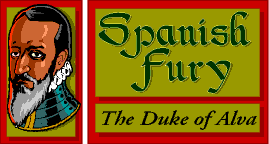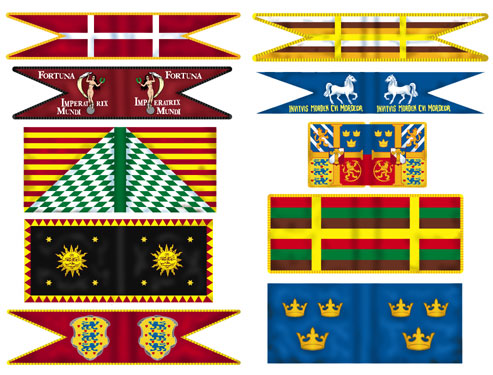"War is not a river, or a lake, but an ocean of all that is evil"
- Gustav II Adolph
Welcome friend, to the page that asks, "Who gets the crowns on their escutcheon"?
---------------------------
Contact us
The Perfect Captain
---------------------------
The Perfect Captain is proud to present Daniel Staberg's
Nordic Fury!
An Historical Survey of the armies for The Swedish-Danish War, 1563-1570
....and A Spanish Fury! Supplement
Introduction
This supplement and historical survey of the protagonists has been made possible through the hard work of Daniel Staberg. I believe it is safe to say that there is unlikely to be such a comprehensive analysis available in English anywhere- certainly not in our hobby. An obscure subject to most, he has been able to come up with highly specific information on the soldiers and regiments of both sides, and should provide more than enough details to enable a hobbyist to put together a very well researched force, a rarity for any 16th century nation. Thanks again, Daniel. You'll notice in the countermix example provided below one of your ancestors....

The Northern Seven Year's War
The Nordic Seven years war 1563-1570 was the result of steadily rising tensions between
Sweden on one side and Denmark, Lübeck and Poland on the other. The destruction of
the Livionian branch of the Teutonic Order had seen Poland, Denmark and Sweden and
Russia claim a share of the it's lands. In 1562 King Erik XIV of Sweden aggressively tried
to expand his share by seizing lands and castles held by the Duke Magnus (brother of the
King Fredrick II of Denmark) and Poland. In order to increase the trade passing trough
the now Swedish city of Reval (Tallinn) he also launched a naval blockade of Russian held
Narva something which angered the Hanse city of Lübeck which controlled most of the
trade with Russia passing through Narva. Added to conflict were the fact that both
Denmark and Lübeck wanted to restore the old privileges and powers they had held
over Sweden. Lübeck wanted to restore it's monopoly on the Swedish trade as well as
securing the repayment of remainder of the loans with which Gustav I Vasa had financed
Sweden's war of Independence in 1521-1523. The monopoly had ceased and the
re-payments had been stopped as a result of Lübeck supporting the losing side in the
1534-1537 Danish civil war in which Sweden supported the winning side.
When war began in 1563 the best part of the Swedish army was deployed in Finland and
Estonia, not along the border with Denmark. Instead of the short victorious was which
Fredrick II hoped for, the war dragged on for seven years which exhausted all sides.
Large parts of both the eastern Danish provinces (today southern Sweden) and the
Swedish border provinces were ravaged again and again by the armies. The armies could
wand would wreck havoc even when moving through friendly territory. The old
medieval fortifications used in Scandinavia proved with a few exceptions to be no match
for modern siege artillery even when reinforced by earthworks. However such artillery was
hard to move by land even in the best of circumstances which limited the impact of
modern guns once the war moved beyond the few good roads or the coastline.
In battle the excellent Danish and German cavalry combined with the skill of
Daniel Rantzau gave the Danish army an edge which the excellent Swedish infantry
created by Erik XIV's reforms could not counter. By 1567 large parts of the Swedish
army was becoming increasingly demoralized and the bouts of mental illness suffered by
King Erik proved crippling. By 1568 the old resentments and plots of the Swedish
nobility and Erik's brothers reached a flash point and Erik was deposed after a
short civil war.
In 1570 a peace was finally concluded in Stettin, both Denmark and Sweden gave up any
claims to each others territory thus finally and formally desolving the Union of Kalmar.
Sweden would no longer prevent Lübeck from trading with Narva and would allow the
Emperor to redeem it's possessions in Estonia and bestow then upon Denmark as a imperial fief. Finally Sweden 150.000 thalers to Denmark as a ransom for the strategic port and fortress of Älvsborg and 75.000 thalers as war damages to Lübeck.
In the end Lübeck never received even one thaler of damages and the Emperor never
bought Estonia from the Swedes thus setting the stage for the next round of Baltic wars
fought between a loose alliance of Sweden and Poland against Russia.
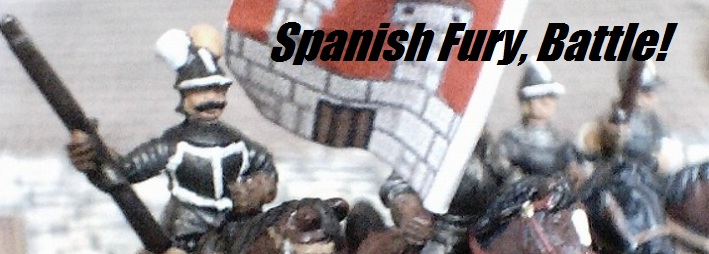

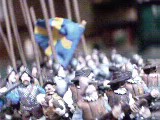


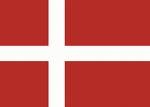

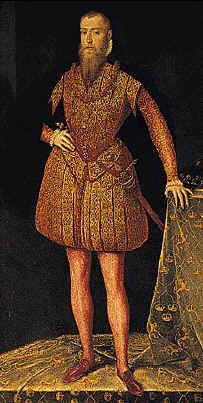
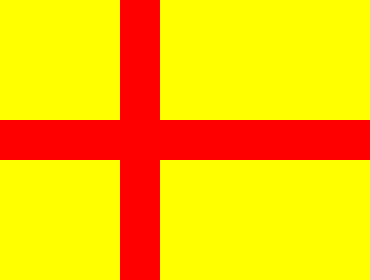
A new Kalmar Union?
Denmark's young and ambitious King Fredrick II also wanted re-establish the Union of
Kalmar (in which the King of Denmark and Noway had also been King of Sweden). It is
not proved that conquering Sweden was one of Frederick II's main goals from the start of
his reign, the evidence is limited an ambiguous at best. What the evidence does show is that
by 1562 Fredrick II was clearly planing for a major war by forming alliances with Lübeck and
Poland as well as recruiting a huge mercenary army as well as making his large fleet ready
for war. Poland played only a minor part in the war, the fighting between Sweden and
Poland began without a forma declaration of war and ended without a formal peace or truce.
It consisted mainly of skirmishes around the disputed parts of Livonia an Estonia, all of
which ended up i Polish hand in the end.
While Sweden aggressive foreign policy and expansion had played a major part in
escalating the crisis around the Baltic in the early 1560's Sweden did not want a war
with Denmark and Lübeck. It's aims outside Estonia were purely defensive. Much has
been made of the fact that that Erik XIV placed both the Danish and Norwegian coat of
arms in his own and as well laid claim to Norway, Halland, Skane and the island of Gotland
those actions were taken to counter the fact that Fredrick II's carried Sweden's 3 Crowns as
part of his coat of arms and thus claimed rule of all of Sweden and Finland. These claims and
counter-claims were by Erik XIV as simple bargaining chips with which both sides would
barter with during the negotiations to extend the old Truce of Brömsebro.
What's in the supplement?
Two full army lists, one for the Swedes and one for the Danes, written out for the Battle! rules, but also of use for Actions! These cover most of the regiments involved, their equipment, fighting prowess, field signs, and their commanders. Flags for both armies! Here's a sample!
Brand new cards for Battle! which will enable you to play out any engagement of the war and
those produced by the Campaign game that is currently in the works! Also included is an army sheet for each army and new officer and regiment couters.
Our first Spanish Fury, Battle! scenario,
The Battle of Axtorna, 1565
What kind of info do you have on the armies?
You'll have to download it to believe it. There is extremely detailed info on both armies and individual regiments within the armies, as well as a background on the style of fighting.
Danish Army Briefing
Swedish Army Briefing
Why should I get into this period?
Nordic Fury! has some big advantages for players interested in late 16th Century warfare. Firstly, both sides fielded relatively small armies, which is easy on the pocketbook. More than that, Daniel's research allows players to build basically the entire armies of both sides, regiment by regiment, for the Western theatre of operations (which this supplement focuses on). Imagine being able to field so many historical regiments and being intimate with all of their strengths and weaknesses, and following their progress though out the war. This makes for a less
"generic" feel to your chosen army. It will also make any campaign that much more enjoyable.
Both sides are quite different also. The Danes relied heavily on Landsknecht mercenaries for their infantry, with a well trained native cavalry composed of the nobility. The Swedes were involved in some major changes to their army, and relied more on newly raised native foot and horse.
Secondly, there is the diversity of the Nordic Seven Years War. Remember that Denmark and Sweden weren't the only players- the Poles and Muscovites were active members too, bringing the flavour of eastern style of warfare. While not included in this supplement, their armies are undergoing playtesting right now, and Daniel will be writing up backgrounds on them both.
Not quite enough? The baltic in this period was scene to many naval engagements between the antagonists. Sweden and Denmark both possessed modern and active navies which were involved in everything from amphibious landing operations to blockading ports, as well as major shoot outs! It won't be long before this spawns some new cards for Spanish Fury, Sail!
How about some links?
The Nordic Seven Years War
An overview
King Frederick II of Denmark
The reigning monarch throughout the war
The Danish Army
Details of the Danish army and its campaigns, 1563-1570 (with pictures!)
The Count's War
Danish-Lubeck War, 1535-1536
The Early Vasas
Some background into the Swedish Kings of the Period
Vasa Ambitions 1560-1598
More basic background, with details of the battle of Stangebro
Even More Vasa Ambitions 1560-1598
Some good details on the politics and wars of the period,
including the Livonian Wars
Scots in Sweden
Scots in the Swedish army in the 16th century




